HELPFUL IDEAS FOR TEACHING ENGLISH TO YOUNG LEARNERS
Markin M.V.
Multiprofile gymnasium # 41 named after A. Pushkin, Taraz
“Children in language classes need to be active rather than passive; they need to be engaged in activities of which language is a part; they need to be working on meaningful tasks and use language to accomplish those tasks.”
Sarah Hudelson[9, P.12]
Teaching English to Young Learners (TEYL) has become its own field of study as the age of compulsory English education. An early start in English language learning in foreign language contexts produces better English speakers. Levels of proficiency seem to be dependent on other factors-type of program and curriculum, number of hours spent in English class, and techniques and activities used. If an early start alone is not the solution, then what can EFL teachers of young learners do to take advantage of the flexibility of young minds and the malleability of young tongues to grow better speakers of English? EFL teachers of young learners struggle to keep up with this trend and seek effective ways of teaching. “Understanding early childhood is essential to knowing what children think and feel and how you can help them become joyful learners” [7, P.10].
The teacher should form the responsive relationship with each child, the interactions he/she has every lesson and the materials and experiences he/she offers become the building blocks for successful learning. In “Tips for Teachers of Children” by Helene Jarmol Uchida, Japan teacher-trainer, stresses that “Elementary children are the most gratifying age level to work with. Why? Because they possess three very important conditions before they even enter the classroom: they are naturally cooperative, curious and the least self-conscious of all students.” [6, P.19]
The priority must be the working relationship with children, taking the role of teacher, parent, friend and organizer which can be achieved by the following recommendations and helpful ideas:
- Give children opportunities to help you (children begin to understand how to contribute positively to group life when you invite them to help you).
- Encourage children to help one another (when you treat children in loving, respectful, and consistent ways, you promote their positive attitude towards not only other pupils but learning as well).
- Include equipment and materials that promote interaction and cooperation (offer large sheet of paper for children to colour or paint on together while revising colours for example).
- Allow children time to cope with their difficulties, but be ready to help if you are needed. You may be surprised by how much children can do on their own (independent research of some new material).
- Work on activities outside the class.
- Relate in ways that built trust. Let children know that they can count on you. Keep your promises.
- Celebrate the child’s birthday with a special snack or just by singing. Your acknowledgment is assign of respect to the child and the relationship you have worked so hard to build during the time you spent together.
There are some important points that should be taken into account while teaching young learners:
- Ultimate goal of any instruction is not to teach isolated skills, but to impart strategies that children can use to learn throughout their lives.
- It is important to treat children as unique individuals. Give them a voice in the classroom to decide the topic of the project or to choose which song to sing.
- Appropriate material for each age group.
- Don’t work too fast through material. Activities should be sort and the classes should be lively.
- Create well-planned, consistent lessons. David Nunan of the University of Hong Kong is concerned about the “great danger that children will be turned off English early if it is done badly. In that case, he advises, “it shouldn’t be attempted. But if it is done well, then kids love it and thrive! ”[2, P.36]
- Use eye contact to communicate praise or disappointment.
- Correct them sensitively, taking pains not to single out or embarrass an individual (have the whole group practice the correct pronunciation together).
- Accept good tries. Don’t insist on perfection. Mistake – making is an important part of language learning.
- Give plenty of approval. Stickers and stamps, or even a hand-drawn funny face, are effective for recognizing a job well done. The youngest children shouldn’t be formally tested and graded.
- Don’t always resort to translation back to the mother tongue. This prevents students from staring to think naturally in English and invites them to speak to you Russian.
- Try not to give explanations and directions in the native language (use native language only if it is really needed). This cheats pupils of their motivation to understand. They will become lazy and wait for the Russian instead of reaching to understanding.
-Supplement activities with visuals, realia, and movement. Young learners tend to have short attention spans and a lot of physical energy. In addition, children are very much linked to their surroundings and are more interested in the physical and the tangible. As Scott and Ytreberg [10, P.2] describe, “Their own understanding comes through hands and eyes and ears. The physical world is dominant at all times.”
One way to capture their attention and keep them engaged in activities is to supplement the activities with lots of brightly colored visuals, toys, puppets, or objects to match the ones used in the stories that you tell or songs that you sing. These can also help make the language input comprehensible and can be used follow-up activities, such as re-telling stories or guessing games.
Included with the concept of visuals are gestures, which are very effective for students to gain understanding of language. In addition, tapping into children’s physical energy is always recommendable, so any time movement around the classroom or even outside can be used with a song, story, game, or activity, do it! James Asher’s method, Total Physical Response (TPR), where children listen and physically respond to a series of instructions from the teacher, is a very popular method among teachers of young learners. [4, C.25]
-Involve students in making visuals and realia. One way to make the learning more fun is to involve students in the creation of the visuals or realia. Having children involved in creating the visuals that are related to the lesson helps engage students in the learning process by introducing them to the context as well as to relevant vocabulary items. In addition, language related to the arts and crafts activities can be taught while making or drawing the visuals. Certainly students are more likely to feel interested and invested in the lesson and will probably take better care of the materials. [11, P.36]
If you cannot spare the time in class to make the visuals you want to use, another idea is to consult the art teacher at your school (if you have one) and combine your efforts. Then, when students come to English class, they will bring their art projects to use. In addition, before the lesson, you can warm up by having students explain in English what they made in art class.
Some activities could use objects, toys, stuffed animals, or dolls. A “show and tell” activity is a perfect way to get students interested in the lesson with their own toys. The introduction to the lesson could be a short “show and tell” presentation that gives students a chance to introduce their objects in English. After this activity, get right into the lesson using the objects the students brought in.
- Move from activity to activity. As started before, young learners have short attention spans. For young students, from ages 6 to 10 especially, it is a good idea to move quickly from activity to activity. Do not spend more than 10 or 15 minutes on any one activity because children tend to become bored easily. Scott and Ytreberg
[10, P.102] suggest creating balance between the following kinds of activities:
quiet/noisy exercises;
different skills: listening/talking/reading/writing;
individual/ pairwork/ groupwork /whole class activities;
teacher-pupil/pupil-pupil activities.
When teachers mix up the pace of the class and the types of activities used, students will be more likely to stay focused on the lesson, there-by increasing the amount of language learning in class.
Having taken into consideration the psychological character of teaching learners, teachers should select activities and language experiences which are familiar to them. For this purpose the teaching of the language material is carried out through games , songs, drawing, gluing, cutting, working with picture cards, pantomiming, dominoes, lotto using such materials as masks, toys, puppets, their drawings, crayons, markers, cutouts, costumes and etc.
Variety of activities will help you make learning great fun. There are some of them:
Play a game of “Toss the ball”. The first player must choose a word, such as ball. Then, each time you toss the ball, the player who catches it must say another word that begins with the same sound. Vary the initial sound after four or five sosses of the ball: (ball, bird, book, etc.)
Play games, such as looking for specific colours and shapes about the class.
Play a game of rhyming charades with your children. Take turns pantomiming different animals, such as a cat, dog, pig, goat, or frog. Players must guess the name of the animal and then offer a word that rhymes with that animal’s name: (cat/bat, goat/boat, etc.)
Play sensory games that require looking, listening, and touching to help children become more aware of their surroundings.
Dramatizing. Using drama and drama activities has clear advantages for language learning. It encourages children to speak and gives them the chance to communicate , even with limited language. By taking a role, children can escape from their every day identity and lose their inhibitions.
Singing songs.
Total Physical Response (TPR) activities. Mario Herrera, teacher trainer reports “This approach is ideal for young learners whose verbal abilities are still undeveloped and even the shyest children like it because there is no speaking involved. It provides intense listening practice of basic language as children physically respond to commands. Children show they understand the action by acting it out and they can feel successful at English from the very beginning. TPR lets you put children ‘s natural energy to use to learn English.” [8, P.45]
Show that English is fun.
References:
1. Caroline Linse, “The Children’s Response TPR and Beyond ,” the USA, 1993.
2. David Nunan, “Children’s language and learning”, Hong Kong,1999.
3. Erin Bouma, “Practical advice for teachers of young learners from the experts,”
Washington, D. C., 1998.
4. James Asher, “Total Physical Response,” Washington, D.C., 1977.
5. Joan Kang Shin, “Ten Helpful Ideas for Young Learners,” the USA, English
Teaching Forum, 2006.
6. Helene Jarmol Uchida, “Tips for Teachers of Children,” Japan, 2001.
7. Keiko Abe, “Teaching English to Children in an EFL Setting,” Yokohama, Japan,
English Teaching Forum, 1991.
8. Mario Herrera, “Balloons”, Washington, D.C., 2002.
9. Sarah Hudelson, “EFL Teaching and Children: A Topic-Based Approach,”
Arizona State University, English Teaching Forum, 1991.
10. Scott and Ytreberg, “Thought and language,” London, English Teaching Forum,
1990.
11. Thomas Kral, “Teacher development. Making the right moves ,” Washington, D.
C., 1996.
12. http://www.ridsource.com
13. http://www.teachingstrategies.com
14. http://www.familyeducation
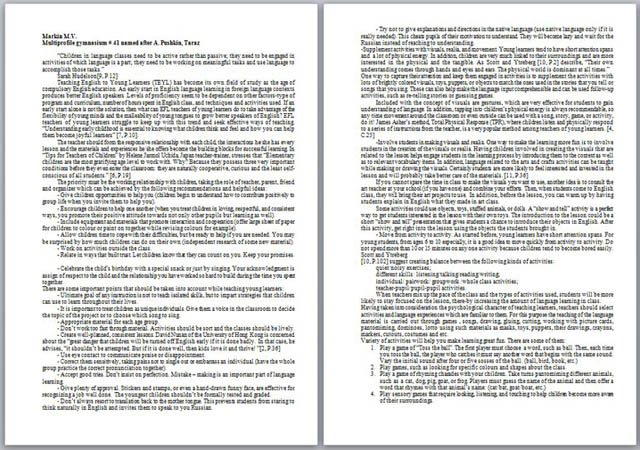

 Получите свидетельство
Получите свидетельство Вход
Вход




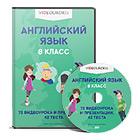
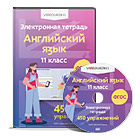
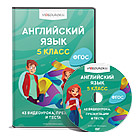
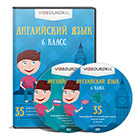
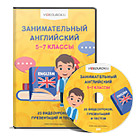
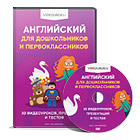
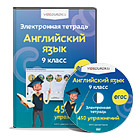

 Материал для учителей английского языка "Helpful ideas for teaching english to young learners" (21.46 КB)
Материал для учителей английского языка "Helpful ideas for teaching english to young learners" (21.46 КB)
 0
0 564
564 30
30 Нравится
0
Нравится
0


